A Guide to the Top Retirement Destinations for Active Seniors in the U.S.

Retirement represents a new chapter in life, offering the opportunity to explore new interests, pursue hobbies, and, for many, consider a change in location. As an active senior, you may be dreaming of sunny beaches, mountain vistas, cultural experiences, or simply a comfortable community that feels like home. The key is to find a place that aligns with your lifestyle and desires in this significant phase of your life. While some may prefer to stay close to home and familiar surroundings, others might be enticed by the prospect of new adventures in different states. Regardless of your preference, there are numerous tools such as seniorsplaces.com that can help you search for the perfect community in your chosen area.
In this article, we've handpicked several retirement destinations in the U.S. that stand out for their unique offerings and commitment to ensuring a fulfilling, active, and comfortable lifestyle for seniors. Let's explore these locations:
1. Naples Florida
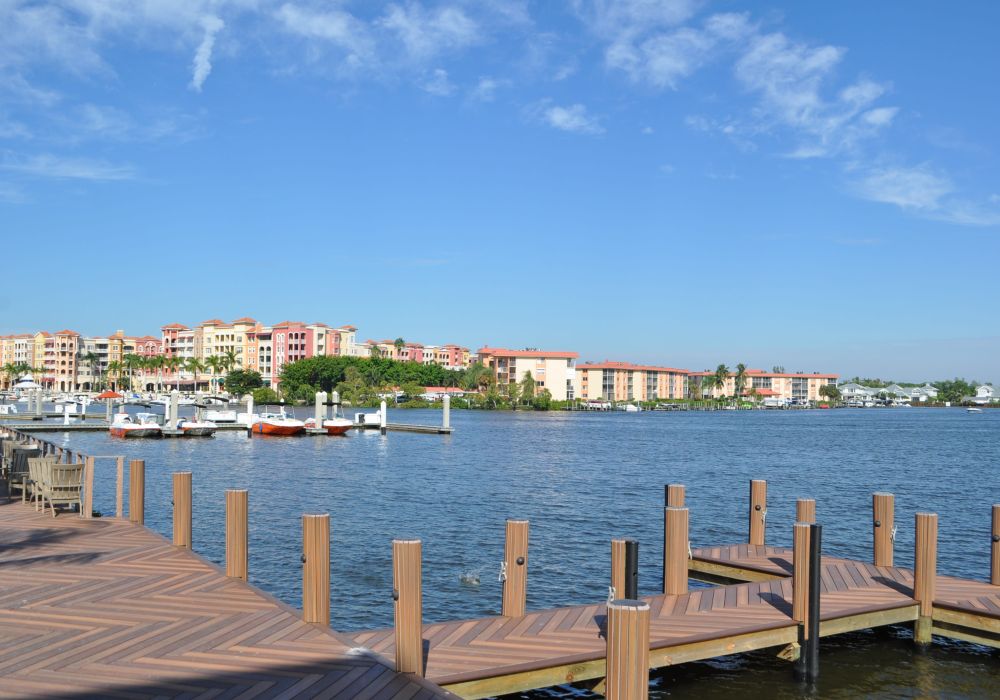
Naples, Florida: Known for its tropical climate, Naples is a paradise for seniors who love the beach and outdoor activities. Besides its beautiful sandy shores, the city is renowned for its healthcare facilities, ensuring that quality medical assistance is never far away. Its plentiful recreational amenities, like golf courses and art festivals, create an environment conducive to an active and engaged lifestyle.
- Crime rates: Naples has a low crime rate compared to the national average. The city reported 1.2 violent crimes and 13.8 property crimes per 1,000 residents in 2019.
- Public transportation: Naples offers a public transit system called Collier Area Transit (CAT) that operates 18 routes throughout the city and the county.
- Senior population percentage: Naples has a high proportion of seniors in its population. According to the U.S. Census Bureau, 53.3% of the city's residents were 65 years or older in 2019.
- Climate: Naples has a humid subtropical climate with hot and wet summers and mild and dry winters. The average annual temperature is 75°F, and the average annual precipitation is 54 inches.
- Healthcare facilities: There are quite a few healthcare facilities that provide quality care for seniors. Some of the top ones are NCH Healthcare System, Physicians Regional Medical Center, and Landmark Hospital of Southwest Florida.
- Cost of living: Naples has a high cost of living compared to the national average. The overall cost of living index for the city is 111.9.
2. Sarasota Florida
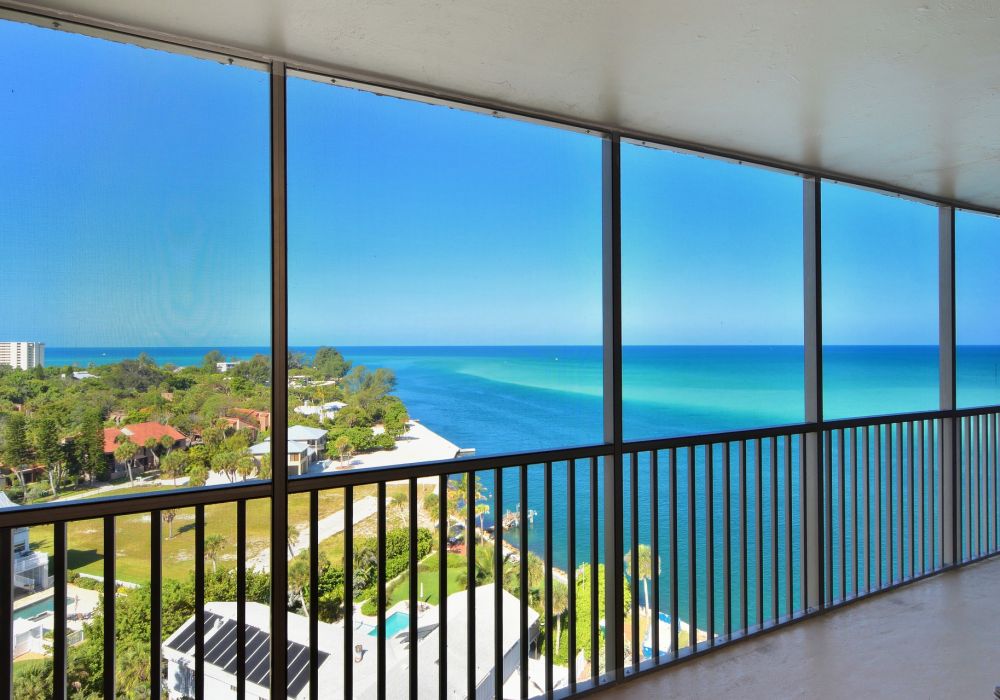
Sarasota, Florida: Sarasota offers a delightful mix of cultural amenities, including art galleries and performing arts centers, and natural beauty with its scenic beaches. Its robust healthcare infrastructure is a definite draw, and the lack of state income tax in Florida can be financially advantageous for many retirees.
- Crime rates: Sarasota has a moderate crime rate compared to the national average. The city reported 5 violent crimes and 27.6 property crimes per 1,000 residents in 2019.
- Public transportation: Sarasota has a public bus system called Sarasota County Area Transit (SCAT) that operates 24 routes throughout the city and the county.
- Senior population percentage: Sarasota has a high proportion of seniors in its population. According to the U.S. Census Bureau, 34% of the city's residents were 65 years or older in 2019.
- Climate: Sarasota has a humid subtropical climate with hot and humid summers and mild and dry winters. The average annual temperature is 73°F, and the average annual precipitation is 53 inches.
- Healthcare facilities: Sarasota has several healthcare facilities that provide quality care for seniors. Some of the notable ones are Sarasota Memorial Hospital, Doctors Hospital of Sarasota, and Lakewood Ranch Medical Center.
- Cost of living: Sarasota has a moderate cost of living compared to the national average. The overall cost of living index for the city is 102.9.
3. Asheville North Carolina

Asheville, North Carolina: Nestled among the Blue Ridge Mountains, Asheville is perfect for retirees who desire a blend of natural beauty, an artsy ambiance, and a vibrant urban scene. Asheville is also home to Mission Hospital, part of the HCA Healthcare system, which offers a wide range of medical services.
- Crime rates: Asheville has a high crime rate compared to the national average. The city reported 7 violent crimes and 63.0 property crimes per 1,000 residents in 2019.
- Public transportation: Asheville’s transit system is called Asheville Redefines Transit (ART) which operates 18 routes throughout the city.
- Senior population percentage: Asheville has a moderate proportion of seniors in its population. According to the U.S. Census Bureau, 18% of the city's residents were 65 years or older in 2019.
- Climate: Asheville has a humid subtropical climate with warm and humid summers and cool and dry winters. The average annual temperature is 56°F, and the average annual precipitation is 45 inches.
- Healthcare facilities: Some of the notable healthcare facilities in Asheville are Mission Hospital, CarePartners Health Services, and Asheville Specialty Hospital.
- Cost of living: Asheville has a moderate cost of living compared to the national average. The overall cost of living index for the city is 105.7.
4. Scottsdale, Arizona
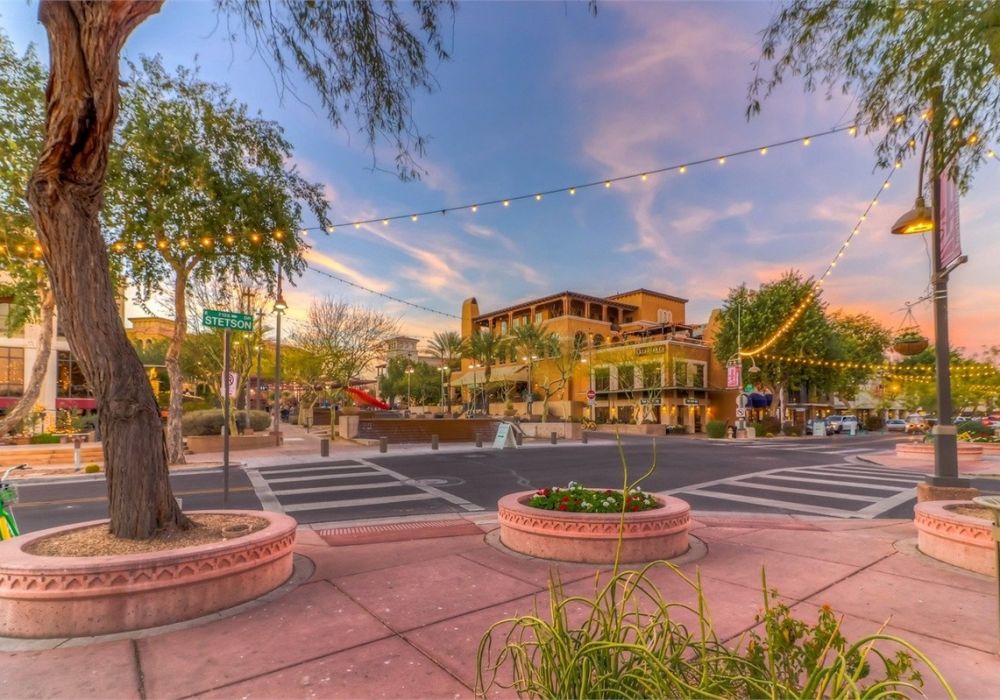
Scottsdale, Arizona: If a desert landscape appeals to you, consider Scottsdale. The city offers a warm, dry climate year-round, and outdoor activities like hiking and golfing are popular. Plus, the Mayo Clinic, a top-rated healthcare provider, has a campus in the city.
- Crime rates: Scottsdale has a low crime rate compared to the national average. The city reported 1.5 violent crimes and 19.5 property crimes per 1,000 residents in 2019.
- Public transportation: Scottsdale Trolley operates four routes throughout the city. The service is free for all riders.
- Senior population percentage: Scottsdale has a high proportion of seniors in its population. According to the U.S. Census Bureau, 23.4% of the city's residents were 65 years or older in 2019.
- Climate: Scottsdale has a hot desert climate with very hot and dry summers and mild and sunny winters. The average annual temperature is 72°F, and the average annual precipitation is 10 inches.
- Healthcare facilities: Scottsdale has a plethora of healthcare facilities that provide quality care for seniors including the following: Mayo Clinic Hospital, HonorHealth Scottsdale Shea Medical Center, and Abrazo Scottsdale Campus.
- Cost of living: Scottsdale has a high cost of living compared to the national average. The overall cost of living index for the city is 142.5, where 100 is the national average.
5. Austin Texas
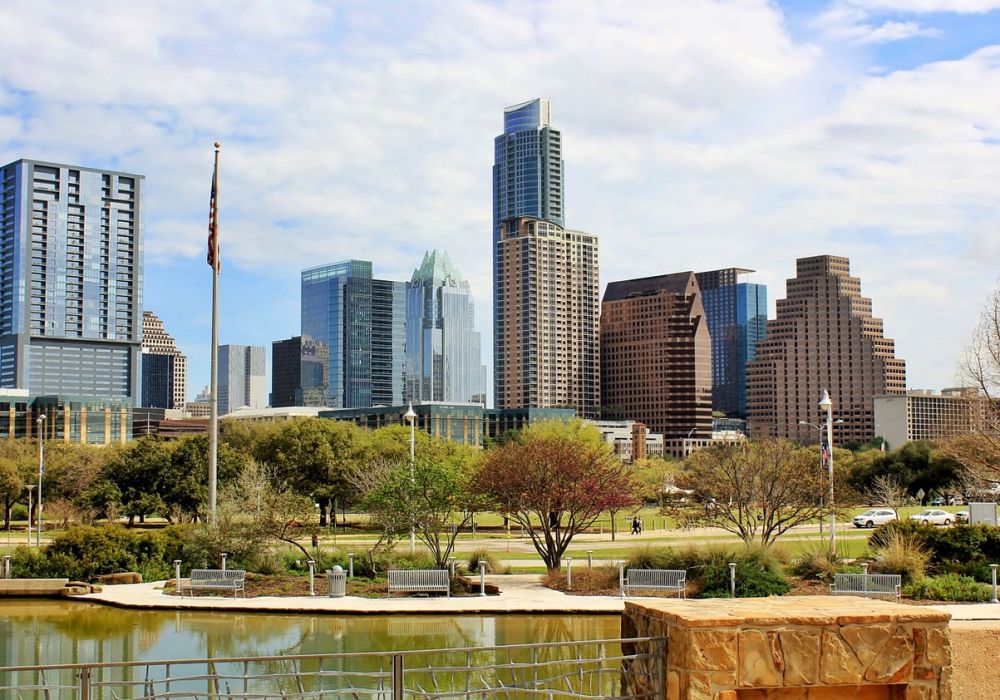
Austin, Texas: Known for its warm weather and vibrant culture, Austin is a music lover's dream. The city combines a relatively low cost of living with high-quality healthcare options and a lively arts scene. Plus, Texas doesn't have a state income tax, which is another financial benefit.
- Crime rates: Austin has a moderate crime rate compared to the national average. The city reported 4.0 violent crimes and 37.0 property crimes per 1,000 residents in 2019.
- Public transportation: Austin offers a public bus system called Capital Metro that operates over 80 routes throughout the city and the region. The fare is $1.25 per ride or $41.25 for a monthly pass. The city also has a light rail service called MetroRail that connects downtown Austin with nearby suburbs. The fare is $3.50 per ride or $96.25 for a monthly pass.
- Senior population percentage: Austin has a low proportion of seniors in its population. According to the U.S. Census Bureau, 9% of the city's residents were 65 years or older in 2019.
- Climate: Austin has a humid subtropical climate with hot and humid summers and mild and dry winters. The average annual temperature is 69°F, and the average annual precipitation is 34 inches.
- Healthcare facilities: Austin has many healthcare facilities in its vicinity. They include the following, and more: St. David's Medical Center, Seton Medical Center Austin, and Dell Seton Medical Center at The University of Texas.
- Cost of living: Austin has a moderate cost of living compared to the national average. The overall cost of living index for the city is 129.3, where 100 is the national average.
6. Portland Oregon

Portland, Oregon: Portland offers seniors a unique combination of a bustling downtown, access to nature, and excellent healthcare services. Its diverse food and arts scene, as well as easy access to the stunning Pacific Northwest landscape, make it an enticing option.
- Crime rates: Oregon has a moderate crime rate compared to the national average. The state reported 3.4 violent crimes and 28.9 property crimes per 1,000 residents in 2019.
- Public transportation: Oregon offers various public transportation options throughout the state, including buses, light rail trains, streetcars, commuter rail trains, and intercity buses. The fare and service vary depending on the location and provider.
- Senior population percentage: Oregon has a high proportion of seniors in its population. According to the U.S. Census Bureau, 18.4% of the state's residents were 65 years or older in 2019.
- Climate: Oregon has a diverse climate that ranges from a Mediterranean climate in the south to a marine west coast climate in the north. The average annual temperature is 48°F, and the average annual precipitation is 27 inches.
- Healthcare facilities: Oregon boasts some top-tier healthcare facilities. Some examples are Oregon Health & Science University Hospital, Providence Portland Medical Center, and PeaceHealth Sacred Heart Medical Center.
- Cost of living: Oregon has a high cost of living compared to the national average. The overall cost of living index for the state is 114.3.
7. Boise, Idaho
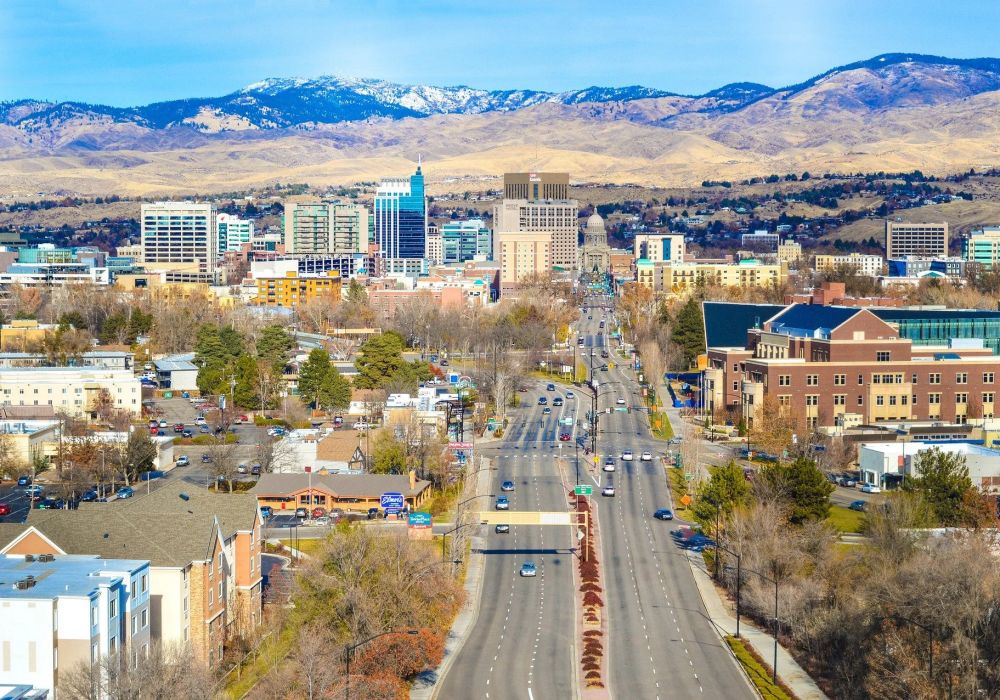
Boise, Idaho: For those seeking a lower cost of living without compromising on recreational options or urban amenities, Boise is a great option. With its vibrant downtown, access to outdoor activities, and a strong sense of community, Boise is often ranked high in livability.
- Crime rates: Boise has a low crime rate compared to the national average. The city reported 2.8 violent crimes and 22.9 property crimes per 1,000 residents in 2019.
- Public transportation: Boise offers a public bus system called Valley Regional Transit that operates 18 routes throughout the city and the region. The fare is $1 per ride or $36 for a monthly pass.
- Senior population percentage: Boise has a moderate proportion of seniors in its population. According to the U.S. Census Bureau, 13.6% of the city's residents were 65 years or older in 2019.
- Climate: Boise has a semi-arid continental climate with hot and dry summers and cold and snowy winters. The average annual temperature is 52°F, and the average annual precipitation is 12 inches.
- Healthcare facilities: Boise has several healthcare facilities that provide quality care for seniors. Some of the notable ones are St. Luke's Boise Medical Center, Saint Alphonsus Regional Medical Center, and Boise VA Medical Center.
- Cost of living: Boise has a low cost of living compared to the national average. The overall cost of living index for the city is 94.8.
8. Cary, North Carolina

Cary, North Carolina: As a part of the renowned Research Triangle, Cary has quick access to premier healthcare facilities, including Duke University Health System and UNC Health Care. It offers a blend of suburban comfort with urban amenities, situated in close proximity to Raleigh. This vibrant community is known for its safety, making it a peaceful and secure place to enjoy your golden years.
- Crime Rates: Cary boasts a very low crime rate compared to the national average, reporting 0.9 violent crimes and 14 property crimes per 1,000 residents in 2019.
- Public Transportation: The city offers a public bus system, GoCary, that operates six routes throughout the city. The fare is $1.25 per ride or $45 for a monthly pass. In addition, Cary is connected to the regional bus system, GoTriangle, linking it with Raleigh, Durham, Chapel Hill, and other nearby towns.
- Senior Population Percentage: According to the U.S. Census Bureau, Cary has a moderate proportion of seniors, with 14% of the city's residents being 65 years or older in 2019.
- Climate: Cary experiences a humid subtropical climate characterized by hot and humid summers, and mild, wet winters. The average annual temperature is 60°F, and the city sees an average annual precipitation of 47 inches.
- Healthcare Facilities: The city is home to several quality healthcare facilities that cater to seniors, including WakeMed Cary Hospital, Duke Health Raleigh Hospital, and UNC Rex Healthcare.
- Cost of Living: Compared to the national average, Cary has a moderate cost of living. The overall cost of living index for the city is 105.2.
Ultimately, the best place for retirement is deeply personal and depends on individual factors like health, lifestyle preferences, and familial proximity. Remember, it's essential to visit potential locations and communities to get a true feel for the atmosphere and lifestyle they offer. Whether you choose a sunny beach town, a mountainous retreat, or a bustling city, ensure that the community resonates with you and supports your vision of an active, fulfilling retirement.